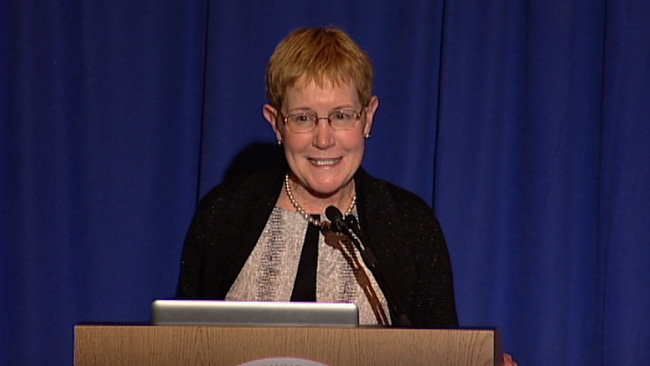As Seen in the San Diego Union Tribune
Schoeninger is a distinguished professor at UCSD and former co-director at the Center for Advanced Research and Training in Anthropogeny. She resides at Belmont Village La Jolla. She wrote this letter in honor of Women’s History Month.
Reflecting on National Women’s History Month that has just passed, a picture in my high school yearbook shows me holding two miniature models of human skeletons, asking: “I wonder what they ate?” Only later did I learn that diet and strategies used to obtain food underlie much of the variation we see in skeletal elements, such as skulls, of our fossil relatives as well as in many archaeological materials we recover from prehistoric human sites.
I went to high school and college in Florida and then to graduate school at the University of Michigan. The first woman faculty member, Joyce Marcus, Ph.D., was hired in archaeology about midway through my time there. Marcus, who is now a member of the National Academy of Sciences, made a major impression on me and advised me, even though I never took a class from her. For my master’s thesis, I refined a method to reconstruct diet for assessing socioeconomic differences across groups in a prehistoric Mexican population by analyzing human bone strontium, a trace element in bone mineral. My doctoral thesis demonstrated greater meat-eating, based on lower bone strontium content, in Neanderthals living over 30,000 years ago compared to descendent populations living about 15,000 years ago in the Middle East.
During my first faculty position in cell biology and anatomy at Johns Hopkins University School of Medicine, I was also able to take a simultaneous post-doctoral position at UCLA in the department of Earth and space science, where I was the only woman above student rank. There I worked with a geochemist expanding another method of diet reconstruction using carbon and nitrogen in the organic fraction of bone. We showed that bone organic of animals eating marine plants and animals differed from those eating terrestrial varieties. Subsequently, I had the opportunity to go to Kenya’s Sibiloi National Park on the eastern shore of Lake Turkana, where I collected bone from naturally deceased animals including plant-eaters like giraffes and zebras, carnivores like lions and spotted hyenas, and mixed feeders like jackals and striped hyenas.
These analyses were conducted in my new faculty position in anthropology at Harvard University. I was the only full-time woman faculty member in the department. That put me in an interesting position which was not the most comfortable. But the support for my research was outstanding and the results of my project were rewarding. I was able to show that nitrogen composition could be used to distinguish between plant-eaters and meat-eaters and that mixed feeders fell in between. Further, carbon composition distinguished grass-eaters like the zebra from leaf-eaters like the giraffe. Humans eating meat differ from vegetarians and vegans. Populations reliant on tortillas differ from those eating potatoes or bread.
After five years, I moved to the University of Wisconsin, which had more women in anthropology. I still remember the relaxing feeling of belonging for the first time in five years. There, I collaborated with an archaeology colleague observing women in a hunting and gathering population on the east shore of Lake Eyasi, Tanzania. The women went out every day and dug for deeply buried tubers: hard work in the hot sun of Tanzania. We observed their collection and recorded the weight of tubers they ate while digging and how much they brought back to camp. I also collected samples, which were subsequently analyzed for basic nutrient analyses. We observed that the women spit out large residues after chewing the tubers, and my analyses showed them to be too high in fiber for our digestive systems. Significantly, they contained a lot of water, which provided essential water in a dry habitat. The women also collected fruits from baobab trees. My analyses showed their seeds contain essential amino acids and fats critical for human nutrition. The women brought back reliable food sources while men hunted animals and in most cases were unsuccessful.
At the same time, I began analyzing hair in nonhuman primates to determine correlations between carbon and nitrogen compositions, and ecology. Much of this was expanded when I moved to UC San Diego; the university found me interesting as a woman full professor and a bench scientist in the Social Sciences. At UCSD, I collaborated with a primatology colleague who observed chimpanzees in western Tanzania. We did several projects together, some of which remain unpublished. Most of the latter part of my academic career was focused on diet and ecology.
Now that I’m retired, I’m pulling data together for understanding the behavioral diversity of our early ancestors in east and south Africa. I’ve loved it all and feel incredibly grateful to have had the opportunities given to me. It’s been a fabulous journey for a Southern girl who was advised to be a high school math teacher.
After a fulfilling career of over 50 years in the anthropology field, I love seeing women and other female leaders who have true passion for science and research push forward and pave the way for the dedicated younger generation of women in this exciting and rewarding industry.
Click here to read article.
